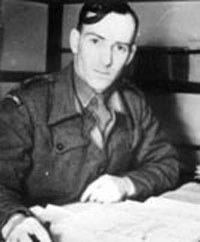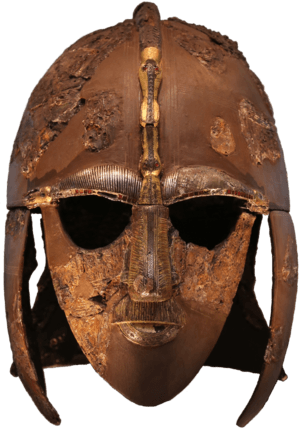Rupert Bruce-Mitford facts for kids
Quick facts for kids
Rupert Bruce-Mitford
FBA FSA
|
|
|---|---|
 |
|
| Born | 14 June 1914 |
| Died | 10 March 1994 (aged 79) Oxford, Oxfordshire, England
|
| Nationality | English |
| Education | Hertford College, Oxford (MA, DLitt) |
| Occupation | Archaeologist |
| Spouse(s) |
Kathleen Dent
(m. 1941–1972)Marilyn Luscombe
(m. 1975–1984)Margaret Adams
(m. 1988–1994) |
| Children | 3 |
| Parent(s) |
|
| Signature | |
Rupert Leo Scott Bruce-Mitford (born June 14, 1914 – died March 10, 1994) was a famous British archaeologist and expert. He is best known for his huge work on the Sutton Hoo ship burial. This was an amazing discovery of an Anglo-Saxon ship and its treasures.
Bruce-Mitford was also a respected professor at Cambridge University. He worked at the British Museum for many years, starting in 1938. There, he led the important project to study and share the finds from Sutton Hoo. He also became the president of the Society of Antiquaries of London, a group for people who study old things. He even helped translate a book called The Bog People into English.
Contents
Early Life and Learning
Rupert Leo Scott Bruce-Mitford was born in Streatham, London, on June 14, 1914. He was the fourth of four sons. His father, Eustace, adopted the name Bruce-Mitford to create a new family identity.
Rupert's father died when Rupert was only five years old. This made life very hard for his family in London. His mother struggled to support them. Rupert was often sick as a child, getting illnesses like scarlet fever and the flu. Because of these challenges, he was even fostered by another family for a short time.
How Did Rupert Get His Education?
Rupert Bruce-Mitford was able to go to school thanks to his mother's cousin. Around 1920, he went to Brightlands preparatory school in Dulwich, London. Later, he was admitted to Christ's Hospital, a special school for children from difficult backgrounds.
Rupert did very well at Christ's Hospital. He even got involved in his first archaeological dig in 1930. He played sports, acted in plays, and wrote articles for the school magazine.
Discovering Archaeology at Oxford
When he was 16 or 17, Rupert switched his studies from classics to history. He found a book about English Gothic sculpture that sparked his interest in old, physical objects. In 1933, he won a scholarship to study history at Hertford College, Oxford.
At Oxford, he loved spending time in the Bodleian Library. He was fascinated by old books with beautiful pictures, especially a book called the Ashmole Bestiary. He would visit the British Museum during school breaks, listening to experts talk about ancient artifacts.
In 1936, he started working on a degree about English art from the 1300s. Even though he didn't finish that degree, he later earned a Master of Arts and a Doctor of Letters from Oxford.
Rupert's Career as an Archaeologist
Working at the Ashmolean Museum
In 1937, Bruce-Mitford started working at the Ashmolean Museum in Oxford. One of his first jobs was arranging old pilgrim badges. He also got involved in "rescue archaeology." This is when archaeologists quickly dig up and save historical items before a building project destroys them.
He worked on a site where old houses were being torn down for a new library. He would carefully pick out broken pottery and other artifacts from the mud. His work helped experts figure out the exact age of medieval pottery. This was a very important study at the time.
Joining the British Museum Team
In 1937, Bruce-Mitford became an assistant keeper at the British Museum. He learned a lot by working on an Iron Age site called Little Woodbury. In 1939, he led his own excavation at a medieval village called Seacourt. He hoped to map out the entire village, which had been abandoned by 1439. This precise date was very helpful for understanding medieval pottery and small objects.
Serving in World War II
From 1940 to 1946, Bruce-Mitford served in the Royal Corps of Signals during World War II. He transmitted morse code and helped with military communications. Even during the war, he found time for archaeology. He helped clear out an old Roman heating system at Middleham in Yorkshire.
He was promoted several times and worked on publications for the School of Signals. He also visited many historical sites across Northern England, taking notes and photos.
Back to the British Museum and Sutton Hoo
After the war, Bruce-Mitford returned to the British Museum in 1946. He was given a huge responsibility: the Sutton Hoo ship-burial. This was a defining moment in his life. The Sutton Hoo treasures had been found in 1939 and stored safely during the war.
He worked closely with experts to restore damaged artifacts like the famous helmet, shield, and drinking horns. It was an exciting time, with new discoveries being made as fragments were put back together.
In 1947, Bruce-Mitford wrote a guide called The Sutton Hoo Ship-Burial: A Provisional Guide. It became one of the museum's most popular books. He also visited Sweden to study similar archaeological finds there.
Other Important Work at the Museum
Throughout the 1950s, Bruce-Mitford worked on many other projects besides Sutton Hoo. He excavated at the Mawgan Porth Dark Age Village in Cornwall. He became a Deputy Keeper and then a Keeper in his department.
In 1957, he helped start the Society for Medieval Archaeology and became its first president. He also became very interested in ancient Celtic hanging bowls. He even appeared on a TV show called Animal, Vegetable, Mineral?
He published a major two-volume work on the Lindisfarne Gospels, a famous medieval manuscript. This book was highly praised. He also helped the museum acquire important items like the Lycurgus Cup and a huge collection of clocks and watches.
He tried to acquire a famous ivory cross, known as the Cloisters Cross, for the museum. However, there were questions about how the owner got the cross, so the museum decided not to buy it.
Finishing the Sutton Hoo Story
In 1960, the museum gave Bruce-Mitford more space and staff to focus on the Sutton Hoo publication. It was a massive undertaking, involving many experts and new research methods. Some people criticized the delays, but the project was incredibly complex.
From 1965 to 1970, Bruce-Mitford led new excavations at Sutton Hoo. The goal was to find more information about the burial mound and the ship. The original dig had been done quickly before the war.
Finally, the first volume of The Sutton Hoo Ship-Burial was published in 1976. It covered the main details of the burial, the ship, and its date. This book was celebrated as one of the most important archaeological books of the century.
Bruce-Mitford left his role as Keeper in 1975 to spend two years as a Research Keeper, focusing only on Sutton Hoo. The second volume came out in 1978, and the third volume (in two parts) was published in 1983. This series of books was widely praised for its detail and scope.
After the British Museum
Bruce-Mitford left the British Museum in 1977. He became a professor at the University of Cambridge from 1978 to 1979. He also worked as a visiting fellow at All Souls College, Oxford.
He continued to work on his older projects, finishing his book on the Mawgan Porth excavations, which was published after he passed away. He also completed his large work on Celtic hanging-bowls.
Personal Life
Rupert Bruce-Mitford was married three times and had three children with his first wife, Kathleen Dent. His daughter, Myrtle, became a professional cellist and even helped her father with the Sutton Hoo finds, working on the ancient lyre. She also co-wrote a paper with him.
He later married Marilyn Roberta Luscombe in 1975. After that marriage ended, he married Margaret Edna Adams in 1986. She was a child psychiatrist and a poet.
In 1987, Bruce-Mitford visited British Columbia, Canada, where his mother's family came from. He met his cousins there and was very interested in his family's history.
Rupert Bruce-Mitford passed away on March 10, 1994, from a heart attack. He was remembered as one of the great scholars linked to important archaeological discoveries.
Images for kids
-
Bruce-Mitford (left) and Paul Ashbee (right) excavating at the Mawgan Porth Dark Age Village in 1950






